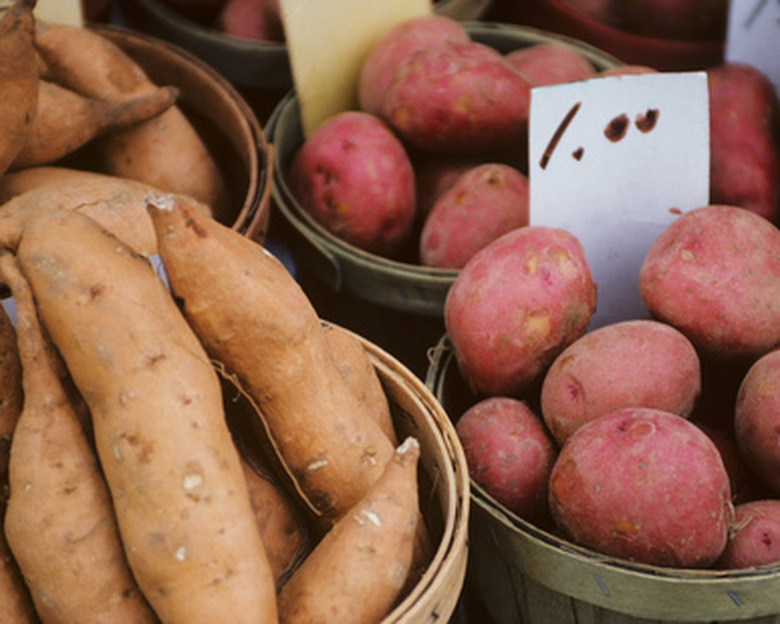Which Fruits & Vegetables Contain Iodine?
Iodine is a necessary element needed by the body for the production of the thyroid hormone. Our bodies do not make iodine, but it is an essential part of the human diet. Fortunately, iodine is found in a variety of foods, with seafood offering the greatest doses. Fruits and vegetables offer significant quantities of the element except in areas where iodine is not present in the soil, including the Great Lakes, Appalachian and northwestern regions of the United States, as well as most of Canada.
Fruits
Fruits offer the least amount of iodine, lagging behind vegetables, meat, dairy and bread, which all have less than half the content found in seafood. Still, fruits grown in iodine-rich soils can prove beneficial, with certain types being especially potent with the element. The best fruits to eat are pineapple, coconut, strawberries, rhubarb, mango, dates, apricots and balsam apple. Among those listed, strawberries provide more than 140 percent of the recommended daily amount (RDA).
- Iodine is a necessary element needed by the body for the production of the thyroid hormone.
- Our bodies do not make iodine, but it is an essential part of the human diet.
Vegetables
Vegetables offer a solid source of iodine, with some variety between items. Topping the list are potatoes, which offer around 60 micrograms per serving. Other vegetables include artichokes and spinach. The best possible source for iodine in the form of a vegetable is kelp (a sea vegetable), with an incredible 415 mcg of iodine.
Other Organic Sources
Fruits and vegetables are not the only organic products to supply iodine. Most grains contain the element, with oats, buckwheat and lentils offering the most significant quantities. Spices such as cinnamon and black and white pepper provide ample qualities as do the herbs fennel and hyssop. When it comes to nuts, try hazelnuts or black walnuts.
- Vegetables offer a solid source of iodine, with some variety between items.
- Topping the list are potatoes, which offer around 60 micrograms per serving.
Caution
Soybeans are rich sources of iodine, but a paradox occurs with soy as the plant actually depresses thyroid function. People looking to increase iodine content or treat hyperthyroidism should avoid soy. On the opposite end, black walnut oil is sold as an herbal remedy to increase iodine, but contains very high doses, so care should be exercised in its use. Certain vegetables from the brassica family, including cabbage, Brussels sprouts, turnip, broccoli and cauliflower, have nominal levels of iodine and can lead to a deficiency if used as the core of your diet.
